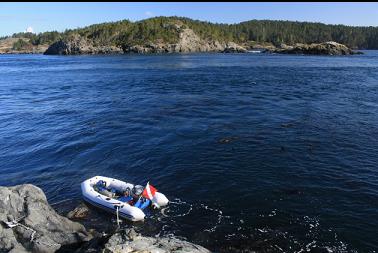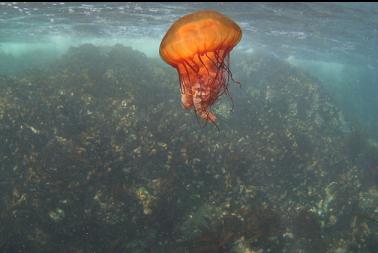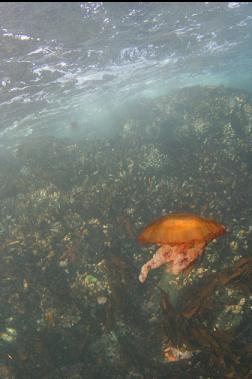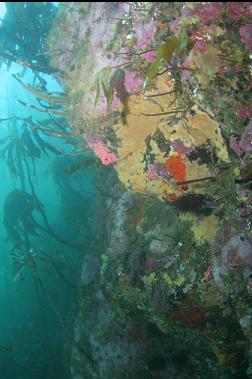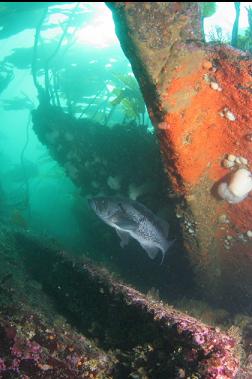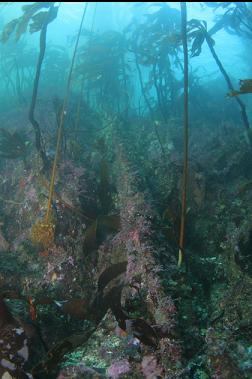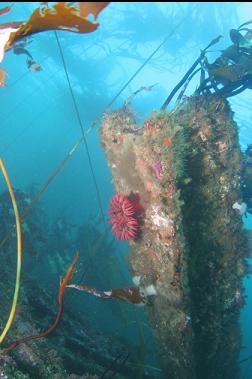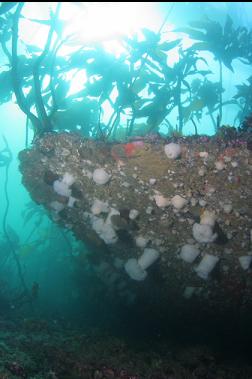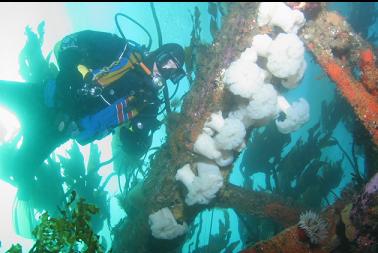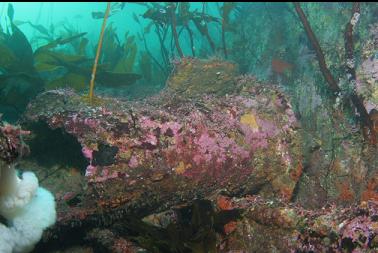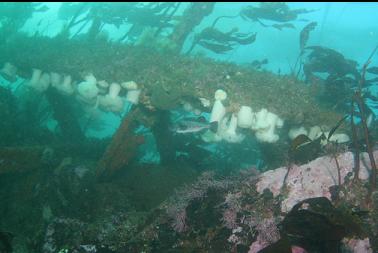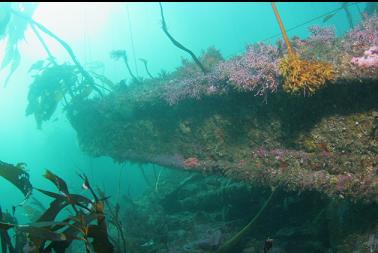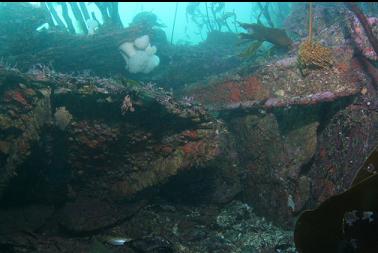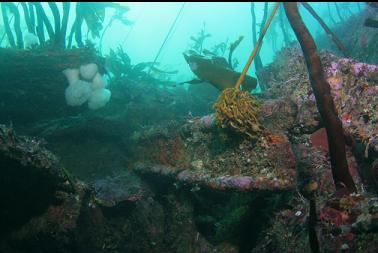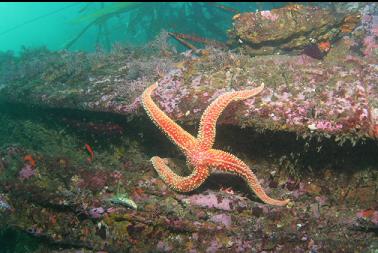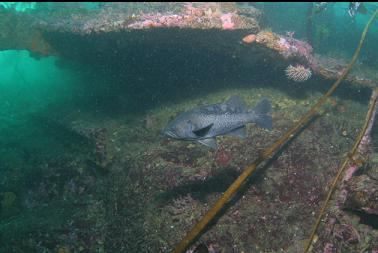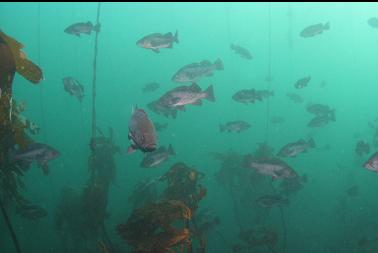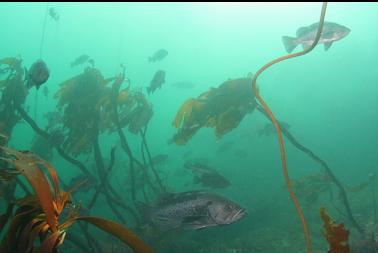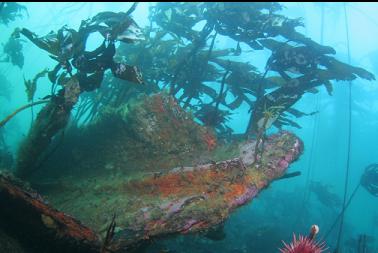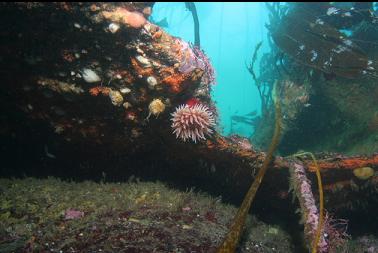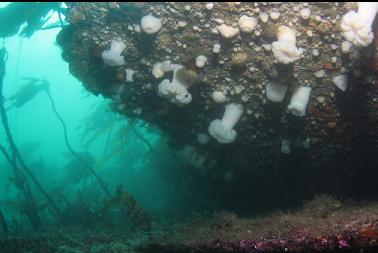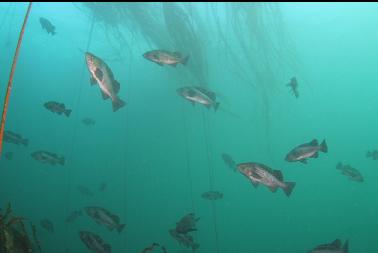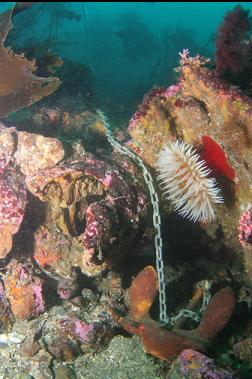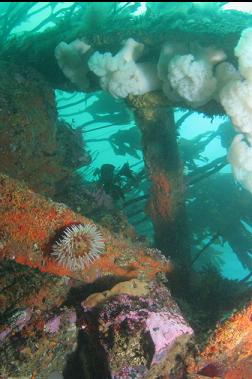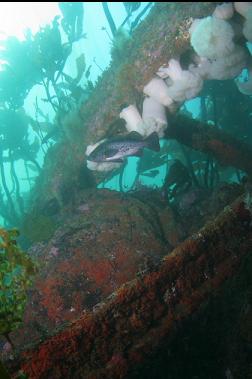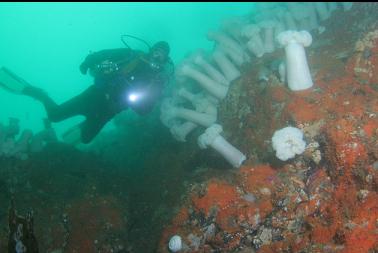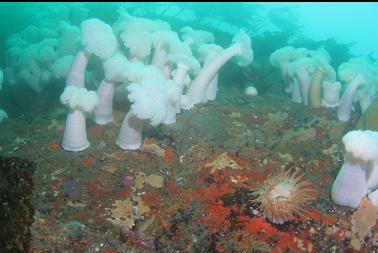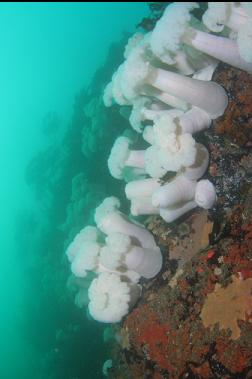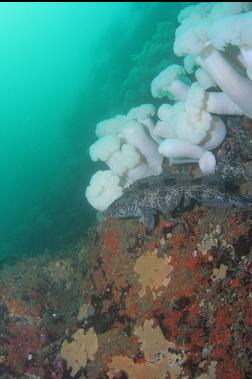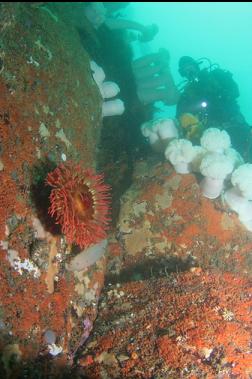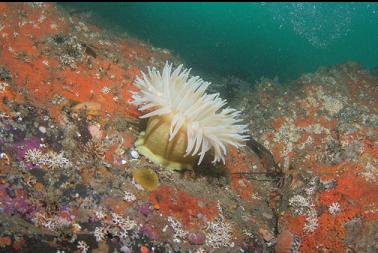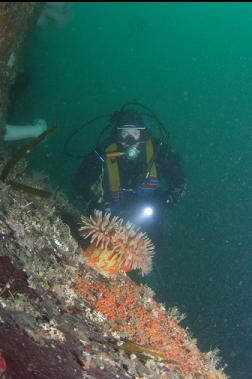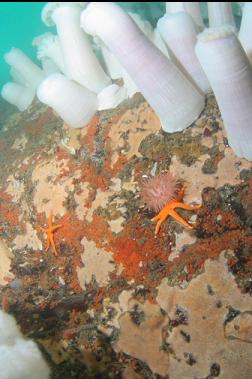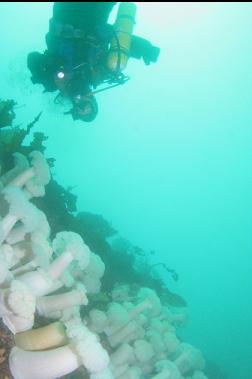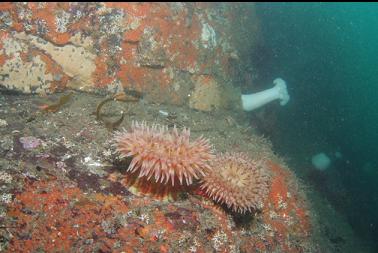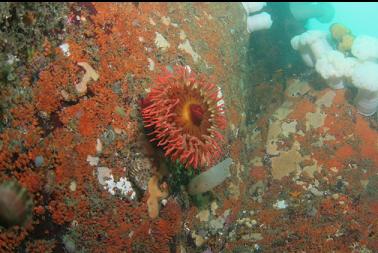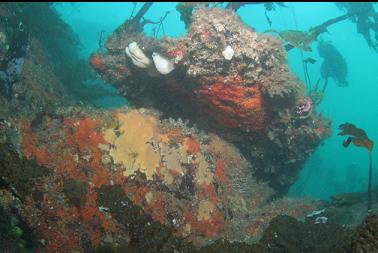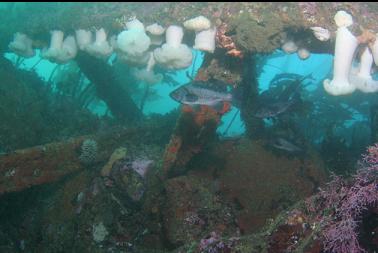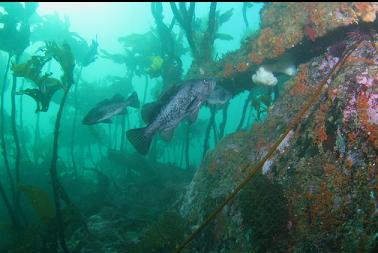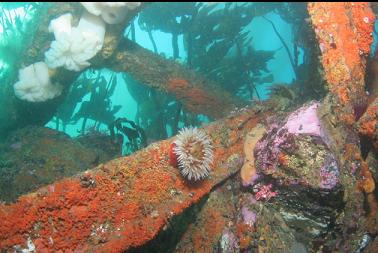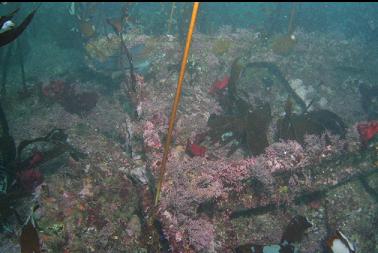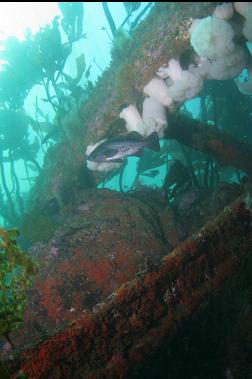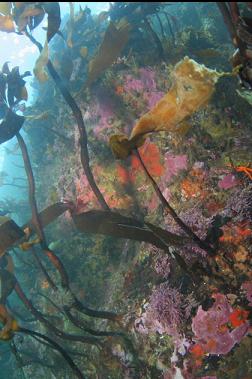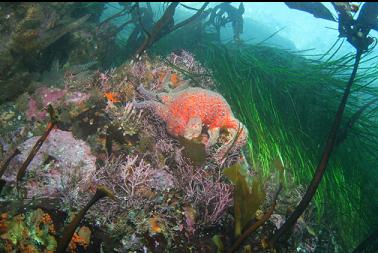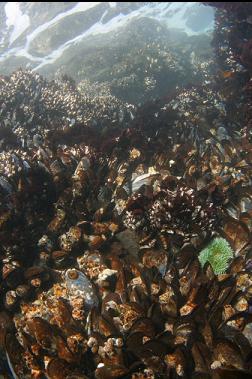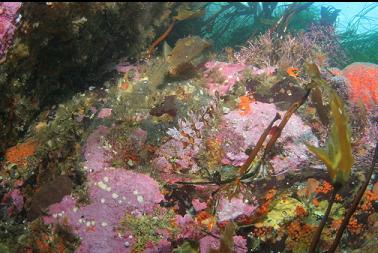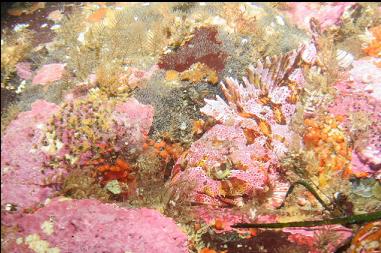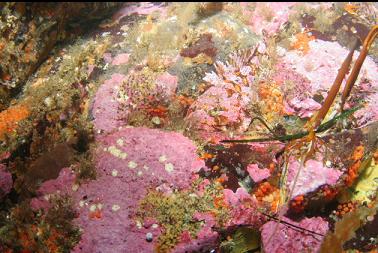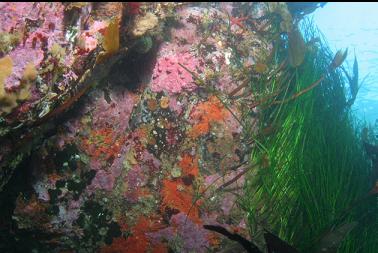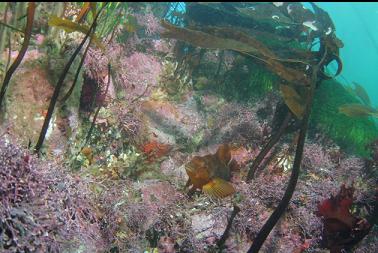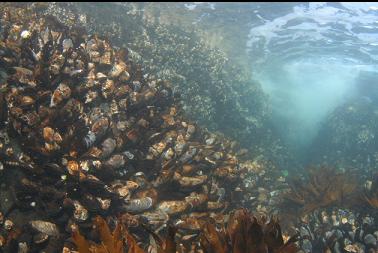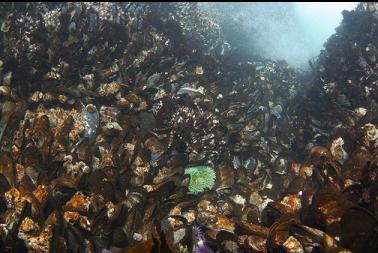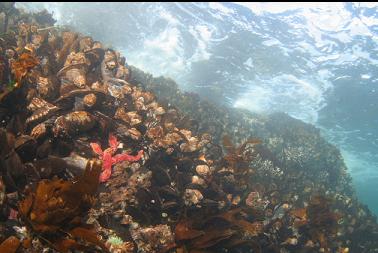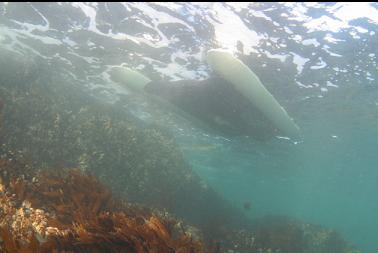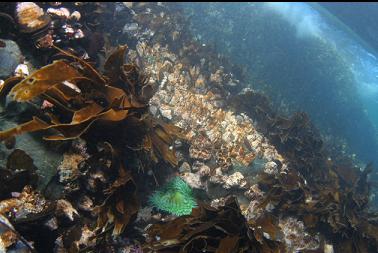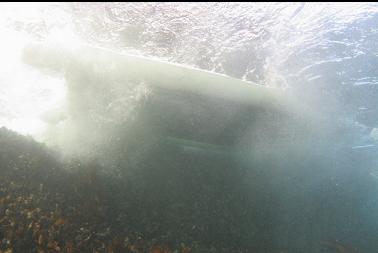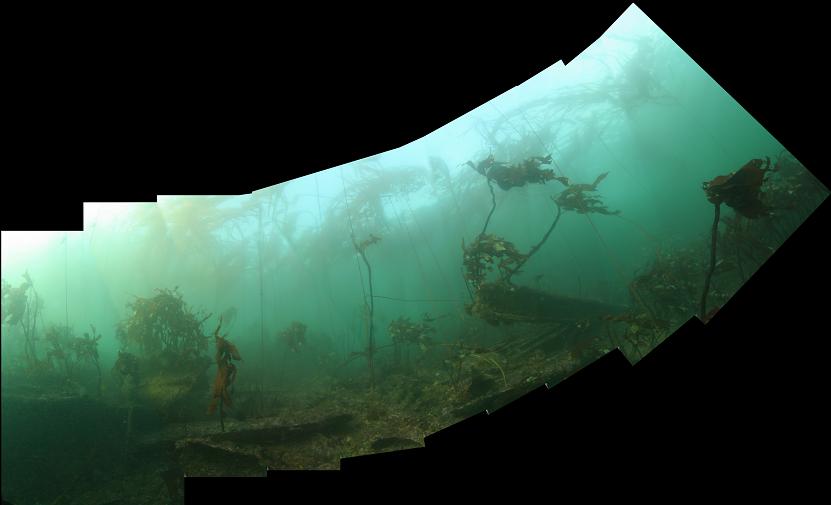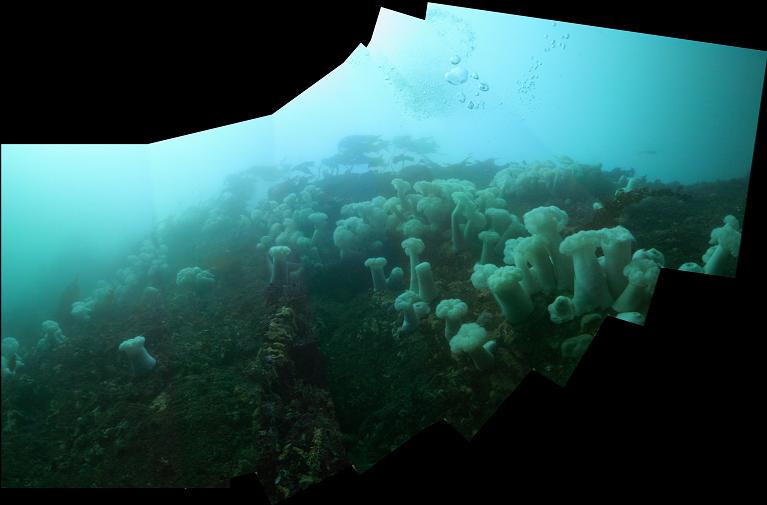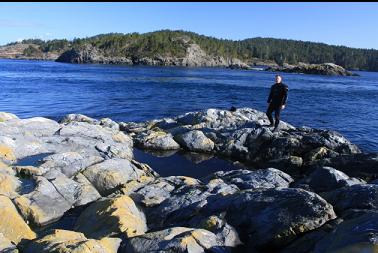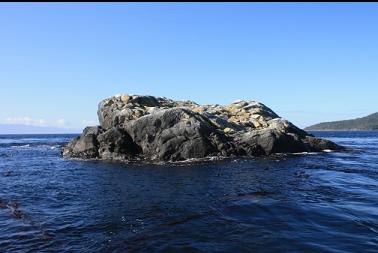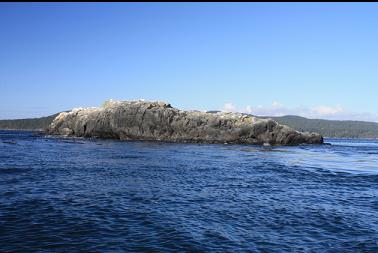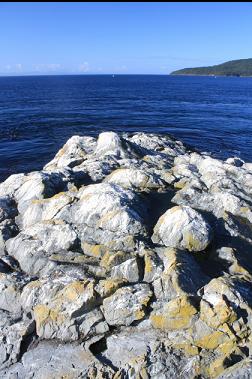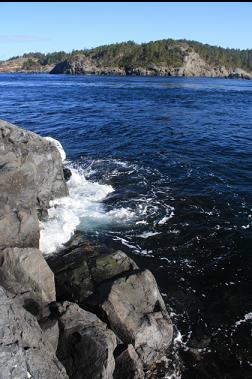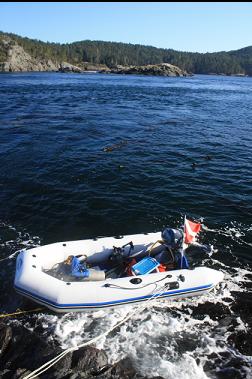This is a tiny, bare-rock, guano-covered island just outside Becher Bay. The Swordfish was a 177-foot-long iron-hulled sailing ship that ran into the island in 1877. This place in mentioned in the book "Diver's Guide Vancouver Island South" and in the Underwater Archaeological Society of B.C.'s "Historic Shipwrecks of Southern Vancouver Island". Diving here has always been on my list, but the Juan de Fuca currents and the island's exposed location have usually made me say "maybe another day". I finally was in the area on a sunny day with light winds and a reasonable tidal exchange so I motored out from Cheannu marina to have a look (Nov. 1, 2009). There was the typical small swell that was hardly noticeable out on the water, but made me think a few times before bringing my boat in next to the rocks. I arrived just before the Race Passage slack, but the current here had already changed and was ripping around the island surprisingly fast. I'd guess that the current here (at least on the day that I showed up) changes at least an hour before the Race Passage published time. I went in close to the island and tied up next to the South-East side. This is the side that was in the "shadow" of the flooding current. I climbed up to the top of the island to get a better view of the currents. I could see the flow swirling around the corners of the island, but the area that I wanted to dive (with the wreck) seemed sheltered enough so I carefully swam out into the kelp, trying to ignore my inflatable boat smashing against the barnacle-covered rocks. The island dropped almost straight down under the boat to about 20 feet deep and then there was a wide ledge sloping down to about 50 feet deep. Visibility was around 40 feet. This ledge was covered with the remains of the Swordfish. Almost the entire bottom was made up of iron beams and flattened pieces of the hull. Most of the metal was overgrown with pink coraline algae, so the flat pieces looked like rock at first until I saw the jagged edges. Fish-eating anemones, plumose anemones and all the small, colourful stuff you see in the Strait of Juan de Fuca (sponge, zoanthids, tunicates, hydroids, etc.) was clustered on the rusty iron. I saw a Puget Sound king crab hanging upside-down on a beam. Stalked kelp was growing all over the place, but it was still easy to see the wreckage. There was nothing left that looked like it was a recognizable part of a ship. Everything was smashed up and scattered around. I saw a large tube that might have been a "hawse pipe" where the anchor chain might have come out. I saw a small, more modern anchor with a chain caught on the wreckage. It was difficult to hover still for photos because of the surge so most of them were "grab shots" taken quickly as I swam by. There was a school of black rockfish hovering above the kelp and the usual kelp greenlings were everywhere. At about 50 feet deep, the wreckage-covered ledge dropped off in a wall that met a flat, sandy bottom at 100 feet deep. This wall was covered with plumose anemones, tunicate colonies, cup corals, and all the other stuff you can see in the pictures. I didn't notice any wreckage at the bottom of the wall, but I just had a quick look. I was still nervous about the threat of current (even though I wasn't feeling much at all). I went back up to the wreckage-ledge and had another quick glance around. In the Underwater Archaeological Society's book, it says there is a cannon and an anchor here, but I didn't see them. This is a large area, though and I didn't see it all. I didn't want to push my luck so I surfaced with 1000 psi still left in my tank. I had a bit of a scare when I couldn't see my boat next to the rocks and I instinctively looked out into the open strait, expecting to see it drifting off in the distance. Fortunately, it was just hidden around the next corner of the island. I had another look at the shallows under the boat. The rocks were covered with giant mussels, gooseneck barnacles and a few giant green anemones. This really is an impressive, historically-interesting and "out in the wild"-seeming dive. Maybe the perfect conditions will all come together again in a few years and I'll come back for another look.


